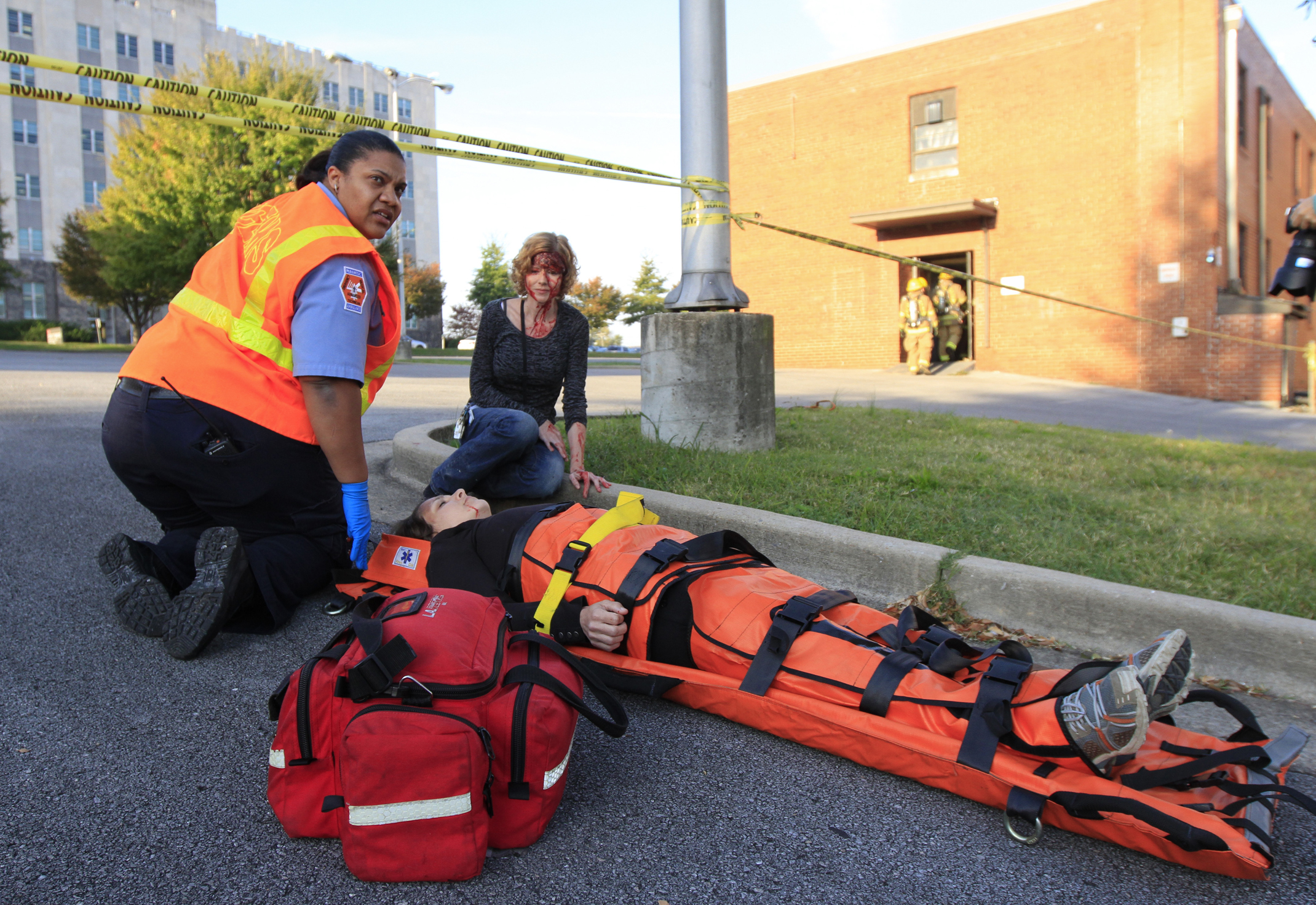Four firetrucks, two ambulances, an EMS vehicle and several police cars converged on UTC's campus Tuesday morning for an emergency management exercise.
The exercise simulated a gas explosion in one of the campus dorms. Firefighters pulled volunteer "victims" -- some covered in fake blood and makeup, others limping -- out of the 'collapsed' building. Paramedics loaded the victims into ambulances. A command post was established in a nearby parking lot, and roads were blocked. Radios crackled. Leaders shouted orders.
The goal of the exercise, Assistant Director of University Relations Cindy Carroll said, was to prepare better for any real emergency in the future.
"An emergency-preparedness plan is never a static document," she said. "We need to refresh and keep accurate on all of our skills and responding to any type of emergency."
It was the first time the University of Tennessee at Chattanooga has put on a simulation as large and involved as Tuesday's, she said. The morning's events followed a thick printed script, but participants in the simulation received only bits and pieces of information in real time.
Eric Cremeens, a flight paramedic with PHI Air Medical, served as director of the simulation. He said going through a practice drill is an opportunity for agencies to learn.
"It will show what is working well and identify areas they can improve on and what they can do better," he said. "Issues might come up that they didn't recognize -- you can't plan for everything -- and they can sit down and say, 'OK, this didn't work, how can we do it better?'"
Local and out-of-state evaluators observed the firefighters, paramedics, police officers and university personnel to provide feedback and suggestions.
Chattanooga Fire Department Tactical Services Officer David Tallent said that while the simulation wasn't exactly like a real emergency -- many more firefighters would have responded and the scene would have been more crowded and chaotic in a real situation -- the exercise was a good training experience.
"Any time we train, it's worth doing," he said. "When we have these large-scale incidents, it exercises a lot of stuff that we don't do during normal day-to-day operations."
Contact staff writer Shelly Bradbury at sbradbury@timesfreepress.com or 423-757-6476.
